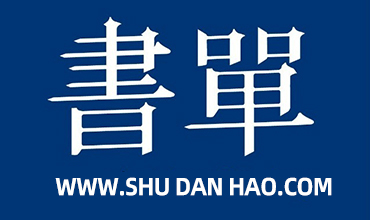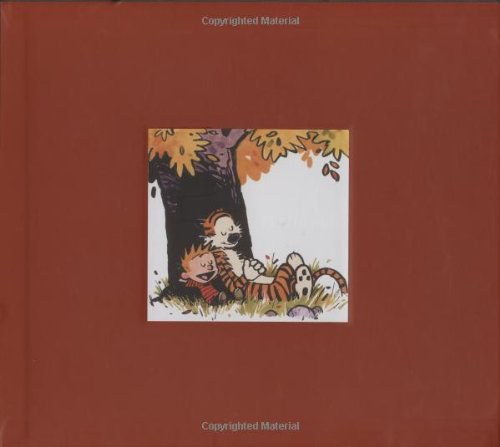
Mike Kuniavsky《Smart Things》
书刊介绍
内容简介
Key Features
Tackles design of products in the post-Web world where computers no longer have to be monolithic, expensive general-purpose devices
Features broad frameworks and processes, practical advice to help approach specifics, and techniques for the unique design challenges
Presents case studies that describe, in detail, how others have solved problems, managed trade-offs, and met successes
Description
The world of smart shoes, appliances, and phones is already here, but the practice of user experience (UX) design for ubiquitous computing is still relatively new. Design companies like IDEO and frogdesign are regularly asked to design products that unify software interaction, device design and service design -- which are all the key components of ubiquitous computing UX -- and practicing designers need a way to tackle practical challenges of design. Theory is not enough for them -- luckily the industry is now mature enough to have tried and tested best practices and case studies from the field.
Smart Things presents a problem-solving approach to addressing designers' needs and concentrates on process, rather than technological detail, to keep from being quickly outdated. It pays close attention to the capabilities and limitations of the medium in question and discusses the tradeoffs and challenges of design in a commercial environment. Divided into two sections ? frameworks and techniques ? the book discusses broad design methods and case studies that reflect key aspects of these approaches. The book then presents a set of techniques highly valuable to a practicing designer. It is intentionally not a comprehensive tutorial of user-centered design'as that is covered in many other books'but it is a handful of techniques useful when designing ubiquitous computing user experiences.
In shot, Smart Things gives its readers both the ";why"; of this kind of design and the ";how,"; in well-defined chunks.
Readership
Primary audiences
Industrial designers. Many people who are primarily industrial designers (at firms such as IDEO, Ziba, Pentagram, Lunar, etc.) are hired based on the perception that the design of anything that any non-software consumer product needs to be designed by industrial designers. Since they get tapped to do work that includes interaction and service design, this book will help them understand what needs to be done (and what skills they can look for in team members).
Software or Web Interaction/Interface designers. The first Web designers came to the medium from traditional graphic design and discovered how different it is, even though it looks like it should be a similar set of skills. Now software and Web designers are discovering the same thing about designing for mobile an ubiquitous products and are looking for resources to help them understand where the differences lie, so they can avoid reinventing the wheel.
Ubiquitous computing designers. Exclusively the concern of corporate and university research labs until recently, the emphasis in ubiquitous computing was primarily on technology, and not on design. However, many people now find themselves designing ubiquitous computing systems (maybe under the heading of entertainment, peripheral or appliance design), and some may even recognize the relationship to ubiquitous computing.
Mobile application designers. There is a growing population of designers created applications for mobile services full-time. Their design challenges regularly intersect with the ideas of ubiquitous computing user experience. Other than informal networks and competitive analysis, there are few sources of information about the design process of interactive products for this medium.
Secondary audiences
Developers working in mobile media. Programmers always end up doing some amount of design (and, too often, all of the design) of the products they're coding for. Programmers are especially comfortable looking in documentation for solutions to their problems. Although this book won't have the kind of "cut and paste" easy solution for them, it'll have guidance for what's worked in the past, which is often as useful.
Project/Product managers. Much like programmers, product managers, whose job requirement is to balance user and company needs, end up being the designers of the services they're shepherding.
Contents
1. Introduction: The Hidden Middle of Moore's Law
People typically read the Moore's Law chart as a trend in the number of transistors. What's implicit in the trend, however, is that it is the product of a conscious decision in the context of a semiconductor marketplace. The prices of new CPUs has stayed roughly the same over the last 25 years, generally between $500 and $1000 at the time of introduction. Thus, another way that to read the chart is that as transistor density increases, the price of older technology proportionally decreases.
This price drop means that ubicomp, first postulated in the late 80s/early 90s has just become a practical reality: the price of a new CPU in 1990 was $1500 in today's dollars, the equivalent amount of processing power can now be purchased for 50 cents. This means that the CPUs that brought us the Web explosion'ones that have the power to operate a multitasking, networked computer'can be put into just about any device at virtually any price point.
PART ONE: Frameworks
2. Broad Concepts
This chapter will introduce the background issues that underlie some of the broad conceptual frameworks
The relationship between industrial, interaction and service design
The importance of context
When designing ubiquitous computing devices, suddenly your frame is no longer the chrome around the browser window, but the world. It's an inversion of traditional computing attitudes, moving out into the world.
The design of social devices
Networking means that devices can communicate with each other, and people can communicate with each other through the devices.
Technology adoption patterns
Each new class of ubiquitous computing devices is essentially a new tool. People react differently to these tools than new pieces of software, which'even if new new'essentially exist in a familiar box. Tool adoption takes a while and follows a familiar pattern. When designing devices in this field, it's valuable to understand whether you're designing something new or extending something existing.
3. Information is a Design Material
Embedded information processing acts like a material and creates new capabilities, and imposes new constraints.
Behavior as competitive advantage
When a designer can include information processing in a product for very little cost, the calculation becomes not one of engineering complexity, that's relatively cheap, but one of competitive advantage. Including a CPU to produce behaviors becomes a line item in the competitive analysis of making an object, just like the calculation about what to make it out of. What you do with that CPU becomes part of the design of the product and needs to be designed with the same attention to the other parts as any of the materials being used.
Toys leading the way
Many new toys depend not just on their physical appearance, but on behavior created by information processing, for their competitive advantage.
Example: Cuddle Chimp
Some qualities of information as a material
Real-time change
Responsive behavior
Can manipulate symbols that have meaning, but not meaning
Requires power, storage
Embodied interaction
The difference between a virtual object and a physical one
4. Information as Material Case Study: the Whirlpool centralpark Refrigerator
The history of the screen fridge
Starting in 1998, one screen fridge introduced every couple of years
All suffered from the same problem: they stuck what amounted to a tablet PC to the front of a fridge, with little understanding as to how people would use it
Very little adoption, since the model didn't fit people's life practices
Whirlpool's third try
The centralpark uses a plugin architecture that allows a variety of different applications to be plugged into it. Each is a self-contained computer, but they're not presented as computers, but as digital picture frames, calendars, etc.
5. Information Shadows
Nearly everything manufactured today exists simultaneously in the physical world and in the world of data.
A digital representation is the object's information shadow.
Information shadow can be examined and manipulated without having to touch the physical object.
Coates' ";Age of Point-At-Things";
Examples:
Amazon ASINs
Mutanen's Thinglink
YottaMark/CertiLogo
Sterling's wine bottle
RFIDs and fiducials
These are the hooks that connect the everyday object to its digital representation
Once hooked, they can be mashed up
6. Information Shadows Case Study: Disney Clickables Princess Charm Bracelets
Description
"; When a girl touches her band to her friend's and presses a button, her band will glow to confirm that a Fairy Friendship has been made [in the online community Disney has set up for the purpose].";
A short history of smart bracelets
Design of a physical/virtual social network
7. Devices are Service Avatars
Networking brings dematerialization
The same information can be accessed and manipulated through a variety of devices.
Value shifts to the information, rather than the device that's communicating it.
Devices become secondary, they become temporary representations of information-based services.
Devices become projections of services
A number of familiar appliances--cell phones, ATMs--are worthless without the networks they're attached to. They are physical manifestations, avatars, projections into physical space of services, but are not services themselves. You really start to see this in purely information entities: what's a plane ticket? what's money? what's a book? They become subscriptions and agreements, for which a device becomes a nearly disposable channel.
Service design
When designing user experiences for ubiquitous computing, the design of the service becomes as important as the design of the device. The iPod is an avatar of the iTunes Music Store. The Amazon Kindle, as questionably designed as it is, is a physical manifestation of the Amazon Kindle Store.
Objects become subscriptions
Right now most of these services are information or media related, but that's changing.
Example: City CarShare
8. Service Avatar Case Study: the iPod
Description
The MP3 player in 2001
The iPod as an iTunes avatar
The iPhone
Design process
9. Applianceness
Defining applianceness
When computation is cheap, we no longer have to make general-purpose computers
相关推荐
-

C++从入门到精通(微视频精编版)
《C++从入门到精通(微视频精编版)》内容简介:本书从初、中级读者的角度出发,通过通俗易懂的语言、丰富多彩的实例,详细介绍了使
-

蔬果岁时记
《蔬果岁时记》内容简介:青葱、竹笋、苦瓜、南瓜、青梅、文旦、甘蔗、橙子……这些绿色蔬果,天然代表了健康和环保,体现了中华美
-

《数据挖掘十大算法》书籍《数据挖掘十大算法》
吴信东(XindongWu),教授英国爱丁堡大学人工智能学博士,任美国佛蒙特大学计算机科学系主任。吴教授在数据挖掘、知识系统和Web
-

徐丽娜《神经网络控制》
神经网络控制已发展成为“智能控制”的一个新的分支,属先进控制技术,为解决复杂的非线性、不确定、不确知系统的控制问题,开辟
-

水运与国运
《水运与国运》内容简介:本书从大禹治水锻造中华民族早期统一体开篇,以“一带一路”战略打造中国连接大陆大洋、构建人类命运共同
-
![[美] 尼古拉斯·卡尔《大转换》](http://oss.shudanhao.com/caiji/chazidian/2023/4422.jpg)
[美] 尼古拉斯·卡尔《大转换》
1、我们这个时代最清醒的思考者之一尼古拉斯·卡尔继《浅薄》《玻璃笼子》之后又一重磅力作。2、在这部跨越历史、经济和技术领域
-

典型半导体团簇及组装材料的结构和电子特性
《典型半导体团簇及组装材料的结构和电子特性》内容简介:典型半导体团簇及其团簇组装材料的结构及其电子性质的研究是当前团簇科学
-

毛峡|薛雨丽《人机情感交互》
《人机情感交互》在详细介绍人机情感交互概念的基础上,分析了当前人机情感交互的研究前沿,特别是在情感模型、人脸表情交互、语
-

幼儿心理学
《幼儿心理学》内容简介:本书分为12章,包括绪论、幼儿心理发展概述、幼儿注意的发展、幼儿感觉和知觉的发展、幼儿记忆的发展、幼
-

Tmall商家成长部《漫步天猫》
Tmall商家成长部(peixun.tmall.com)诞生于天猫旗下,肩负整个天猫电商成长与发展的重任,担负着中国电子商务转型与升级的使命。
-

《外国文学史》学习辅导与习题集
《《外国文学史》学习辅导与习题集》内容简介:本教材为外国文学史的配套教辅,既适合于学生自学,更可作为考研复习资料。本书由外
-

我为博狂《打造你的金牌博客》
《玩的就是调侃:打造你的金牌博客》按博客的主要内容,将纷繁复杂的博客群体划分为五大类,一一介绍,每章通过对该类博客总体情况
-

Peter Smith《深入理解软件构造系统》
构造系统在软件开发过程中处于核心地位,它的正确性和性能,在一定程度上决定了软件开发成果的质量和软件开发过程的效率。本书作
-

《深入浅出Ext JS》书籍《深入浅出Ext JS》
以用户为中心的时代,应用的界面外观变得越来越重要。然而,很多程序员都缺乏美术功底,要开发出界面美观的应用实属不易。ExtJS的
-

深入浅出SSD:固态存储核心技术、原理与实战
《深入浅出SSD:固态存储核心技术、原理与实战》内容简介:本书的内容几乎覆盖了SSD各个模块,既可以作为一本入门书籍进行通读,也
-

孙皓琼《图形对话》
该书系统的介绍了信息设计——这一新兴知识,收录了300多张高清图片。以及荷兰、意大利、日本、中国、英国的信息设计师访谈。会让
-

绘画之美
《绘画之美》内容简介:《绘画之美》是北京大学哲学系教授、中华美学学会副会长朱良志对中国传统文人画的解析与品读。作者选取了元
-

杰出青少年的哈佛智商
《杰出青少年的哈佛智商》内容简介:本书从介绍智力的各个方面考虑,为家长和孩子提供切实可行的有效方法,对兴趣和智力的作用、非
-

儒匠——程泰宁传
《儒匠——程泰宁传》内容简介:他痴迷武侠小说,却误打误撞地闯入建筑殿堂;他是第一位也是至今唯一一位被国外知名出版机构收入世
-

《信息科学与电子工程专业英语》书籍《信息科学与电子工程专业英语》
《普通高等教育"十一五"国家级规划教材•21世纪高等学校电子信息工程规划教材•信息科学与电子工程专业英语》旨在培养学生在专业英





